Yto Barrada
Le Grand Soir
25 Apr 2024 - 25 Apr 2026
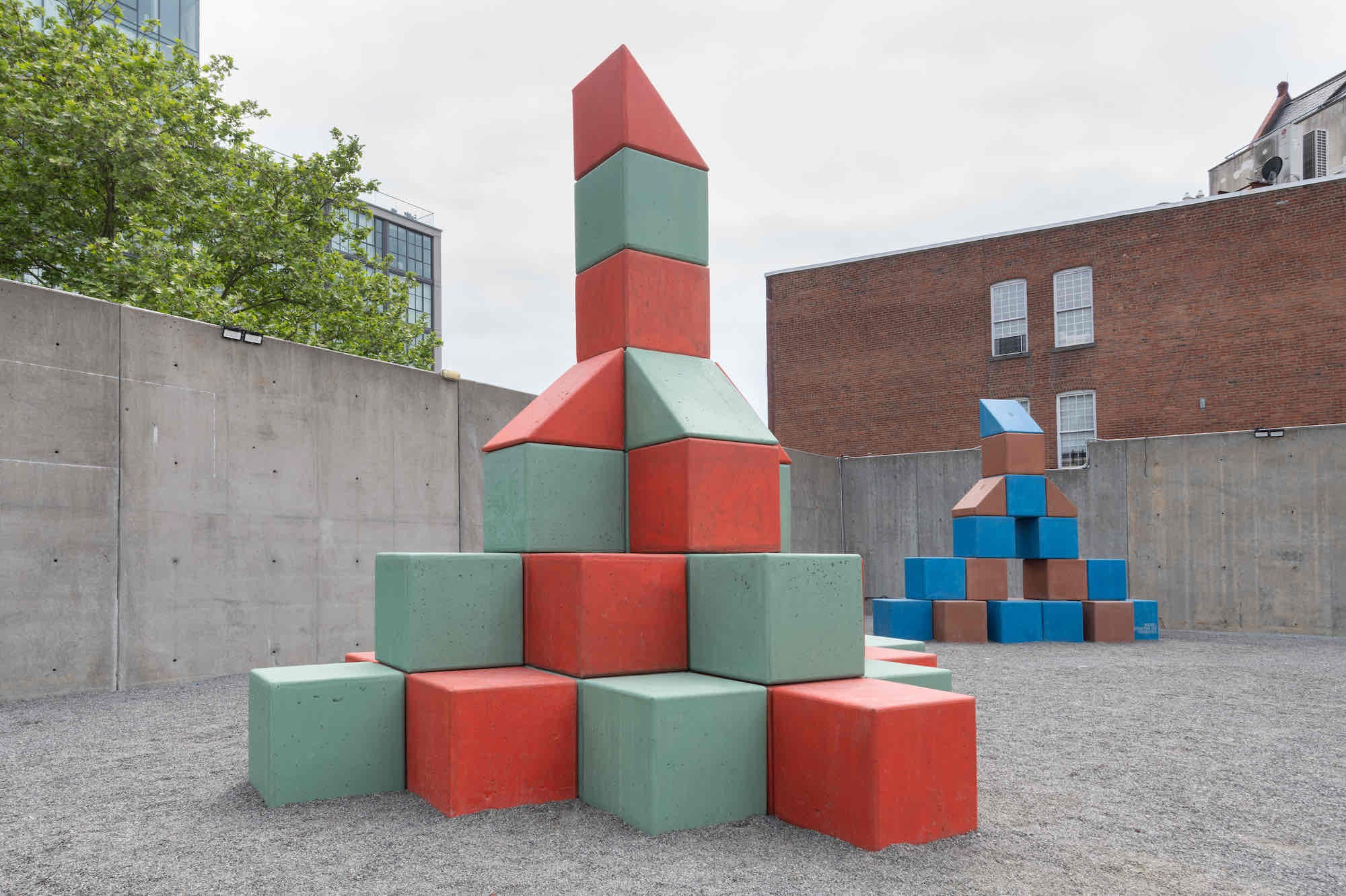
Installation view of Yto Barrada: Le Grand Soir, on view at MoMA PS1 from April 25, 2024 through 2026. Photo: Adam Reich

Installation view of Yto Barrada: Le Grand Soir, on view at MoMA PS1 from April 25, 2024 through 2026. Photo: Adam Reich
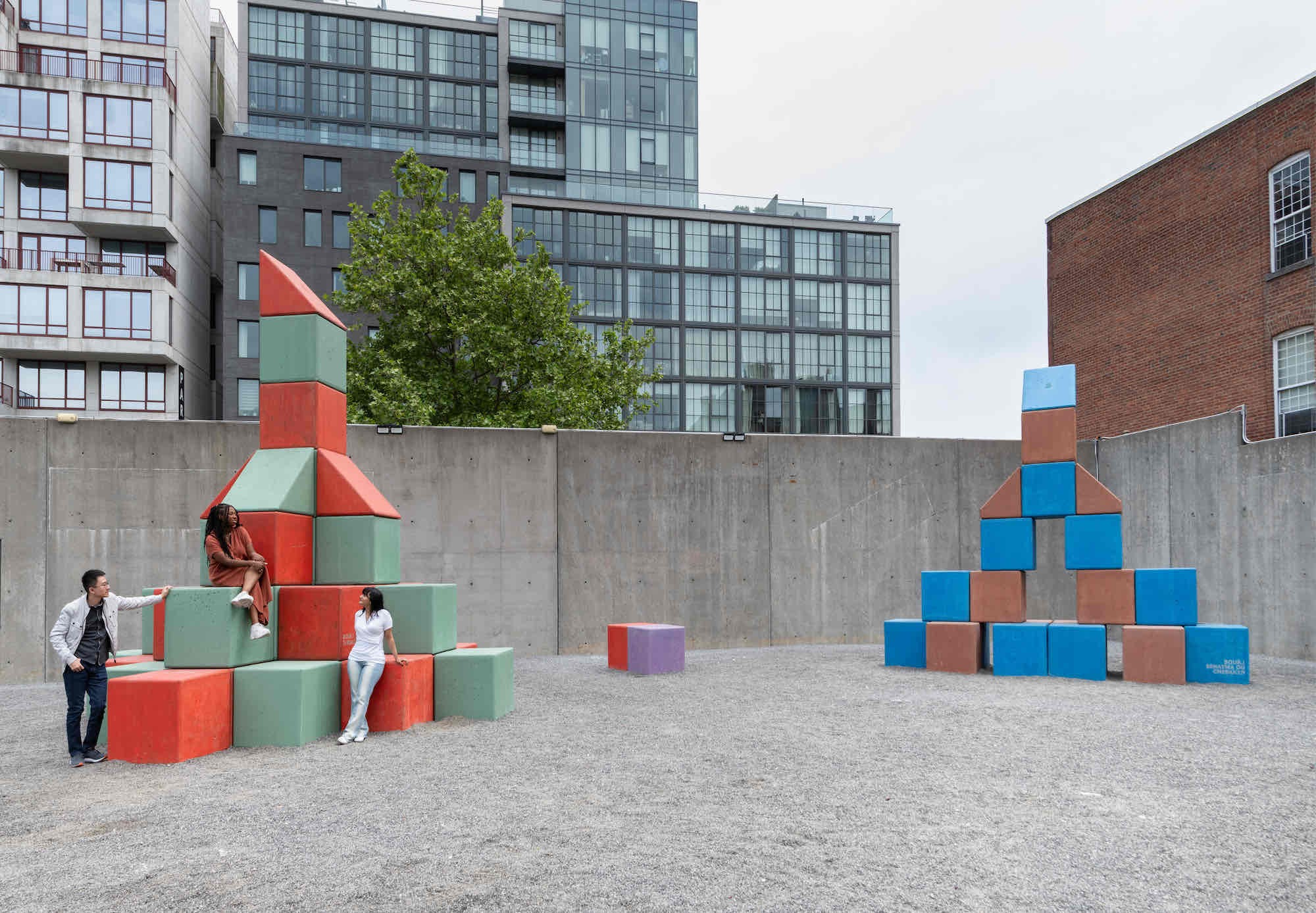
Installation view of Yto Barrada: Le Grand Soir, on view at MoMA PS1 from April 25, 2024 through 2026. Photo: Adam Reich
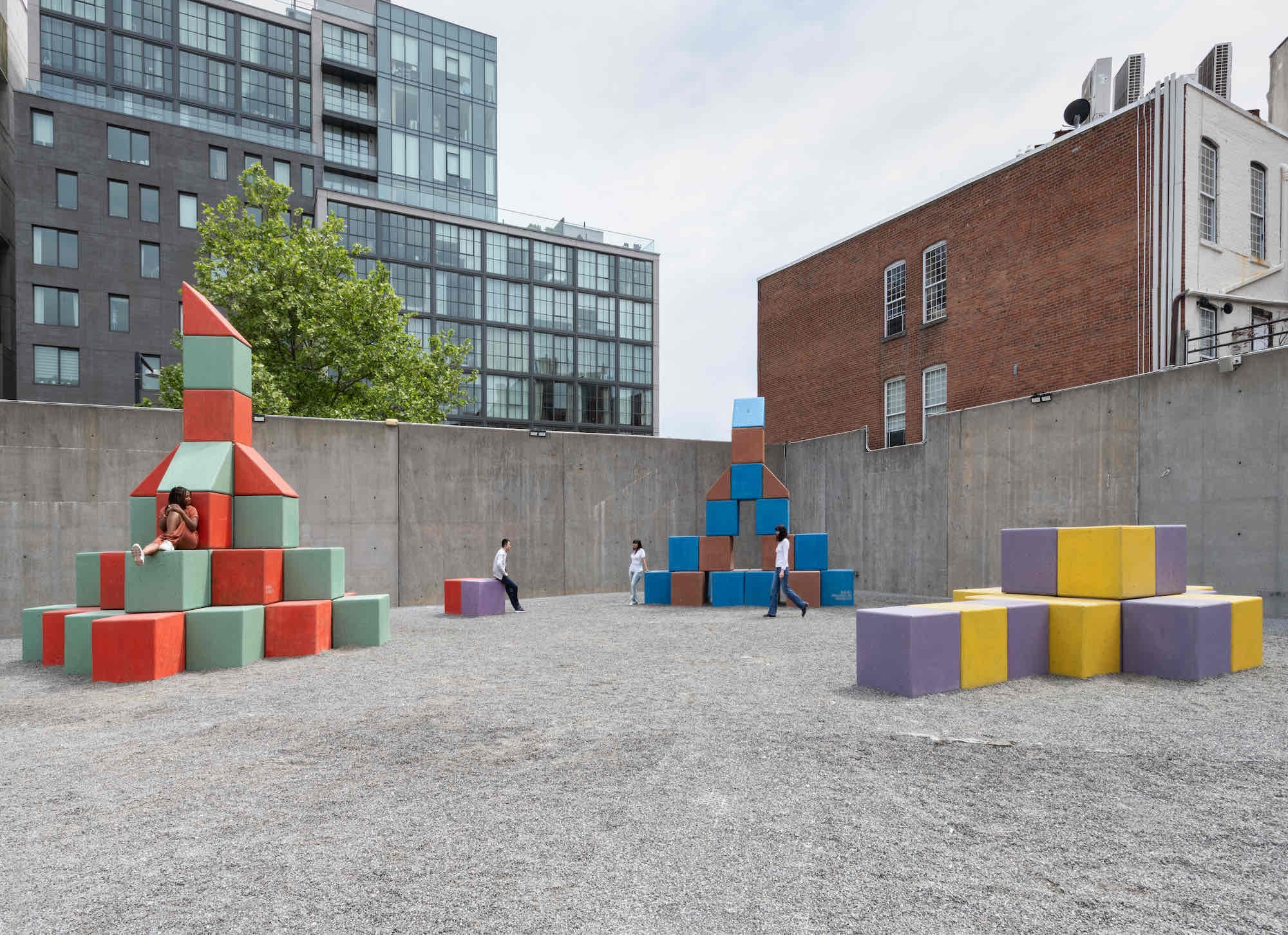
Installation view of Yto Barrada: Le Grand Soir, on view at MoMA PS1 from April 25, 2024 through 2026. Photo: Adam Reich
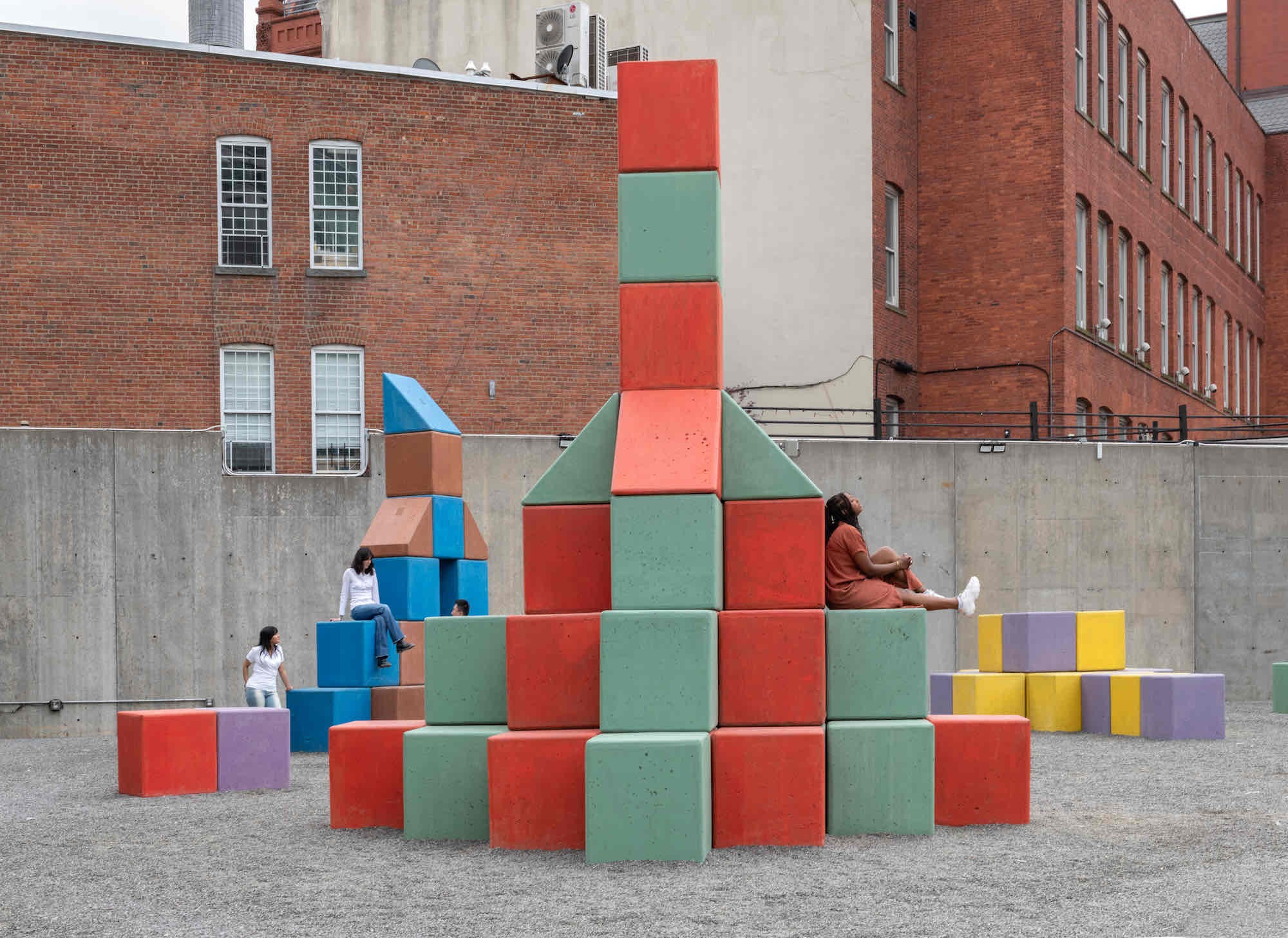
Installation view of Yto Barrada: Le Grand Soir, on view at MoMA PS1 from April 25, 2024 through 2026. Photo: Adam Reich
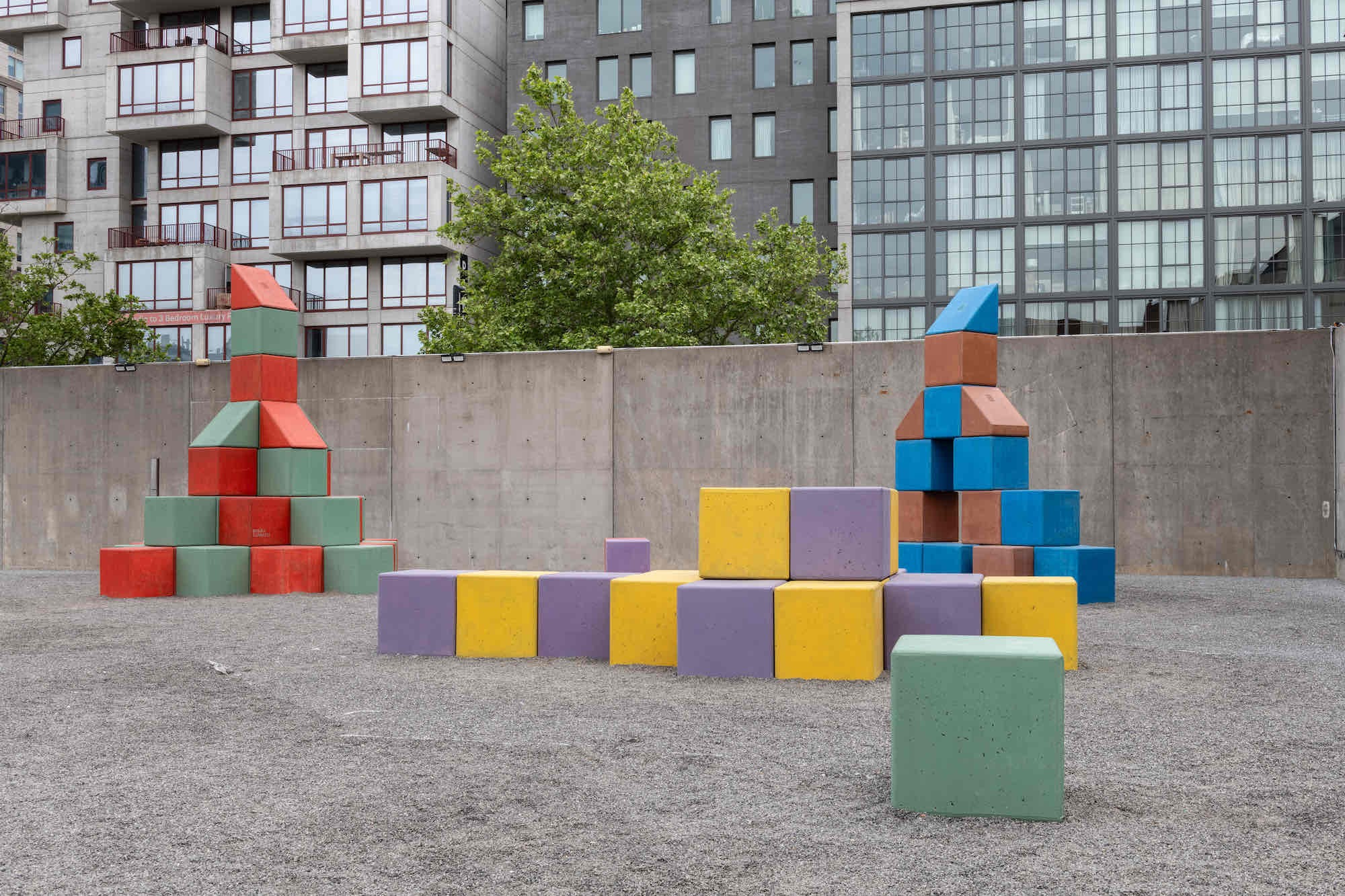
Installation view of Yto Barrada: Le Grand Soir, on view at MoMA PS1 from April 25, 2024 through 2026. Photo: Adam Reich
Artist Yto Barrada (Moroccan-French, b. 1971) will transform the MoMA PS1 courtyard with a large-scale installation titled Le Grand Soir, a two-year commission that continues PS1’s history of inviting artists to respond to its unique campus. Opening April 25, Barrada’s first major outdoor work is composed of colorful concrete blocks stacked into pyramidal towers whose lower levels visitors can sit on and explore, providing an interactive experience in the courtyard and a setting for PS1’s signature summer music series Warm Up. The sculptures’ formations draw inspiration from multiple histories of surmounting barricades and retooling architectures: the construction of human pyramids in Morocco, Moroccan Brutalism, and Barrada’s family lore. As Barrada states, “I am thrilled to be presenting my first large-scale outdoor sculpture in the courtyard at MoMA PS1. We increasingly live in a world of walls, the ones built by the powerful to exclude or contain. As someone who has long researched strategies of resistance, I have centered this project on another form: the pyramid, which instead of walls offers steps, games, secrets, and possibilities. I wanted to combine the reliability of geometry with the precarity of body structures, celebrating forms of solidarity and escape.”
Barrada often mines the hidden histories embedded within architectural and geometric forms, revealing the intersections of material, political, and personal narratives. For Le Grand Soir, Barrada looks to the long tradition of human pyramids in Morocco, whose distinctive applications ranged from acrobatics and martial arts to spiritual practices. Human pyramids were first used by warriors as ladders to peer over fortifications and surmount enemy walls. Fifteenth-century Sufi mystic Sidi Ahmed Ou Moussa of Tazerwalt—now the patron saint of acrobats and dancers—led the defense of southern Morocco against Portuguese incursions, fusing mysticism and warrior ethos. By the nineteenth century, European and American impresarios began inviting Moroccan acrobats to perform in circuses, offering orientalist entertainment for Western audiences. Today, centuries later, the “children of Sidi Ahmed ou Moussa”— as Moroccan acrobats have become known—carry on the tradition of presenting human pyramids in town squares, and his memory is still invoked in folk songs and stories. For this installation, each of Barrada’s structures takes inspiration from a different acrobatic formation traditionally used by the performers: tqal (weight), bourj tarbaite (tower of four), and bourj benayma ou chebaken (tower lift with net).
Translating these precarious acrobatic formations into thirty-inch modular concrete blocks balanced atop one another, the forms of Le Grand Soir also nod to the legacy of Moroccan Brutalist architecture. Concrete Brutalist buildings proliferated after the country’s independence from France and Spain in 1956; the style’s utopian aspirations were embedded in elementary schools, street markets, civic buildings, and baths, among other public works of the postcolonial era. Barrada’s choice of colors reflects those of the CIAM Grid, a visual method of analyzing urban zones that uses four hues: green (housing), red (labor), yellow (leisure), and blue (mobility).
The work’s title, Le Grand Soir (The Big Night), borrows a popular French phrase with roots in early 20th century anarcho-syndicalist culture that connotes a future revolutionary moment when a new world might be born. The work also finds inspiration in Barrada’s personal history; in the summer of 1963, her father was condemned to death for his political activism as the head of UNEM (Union Nationale des Etudiants Marocains), the Moroccan student union. With her mother’s help, he escaped from Morocco, becoming a fugitive and crossing borders in disguise. He remained in exile until the 1970s. Drawing on generational memory, Barrada’s work obliquely converges this familial feat of escape with the history of acrobatics in Morocco, an evolving tradition that also traces broader cultural transformations.
The exhibition is organized by Ruba Katrib, Curator and Director of Curatorial Affairs, and Jody Graf, Assistant Curator, MoMA PS1.
Barrada often mines the hidden histories embedded within architectural and geometric forms, revealing the intersections of material, political, and personal narratives. For Le Grand Soir, Barrada looks to the long tradition of human pyramids in Morocco, whose distinctive applications ranged from acrobatics and martial arts to spiritual practices. Human pyramids were first used by warriors as ladders to peer over fortifications and surmount enemy walls. Fifteenth-century Sufi mystic Sidi Ahmed Ou Moussa of Tazerwalt—now the patron saint of acrobats and dancers—led the defense of southern Morocco against Portuguese incursions, fusing mysticism and warrior ethos. By the nineteenth century, European and American impresarios began inviting Moroccan acrobats to perform in circuses, offering orientalist entertainment for Western audiences. Today, centuries later, the “children of Sidi Ahmed ou Moussa”— as Moroccan acrobats have become known—carry on the tradition of presenting human pyramids in town squares, and his memory is still invoked in folk songs and stories. For this installation, each of Barrada’s structures takes inspiration from a different acrobatic formation traditionally used by the performers: tqal (weight), bourj tarbaite (tower of four), and bourj benayma ou chebaken (tower lift with net).
Translating these precarious acrobatic formations into thirty-inch modular concrete blocks balanced atop one another, the forms of Le Grand Soir also nod to the legacy of Moroccan Brutalist architecture. Concrete Brutalist buildings proliferated after the country’s independence from France and Spain in 1956; the style’s utopian aspirations were embedded in elementary schools, street markets, civic buildings, and baths, among other public works of the postcolonial era. Barrada’s choice of colors reflects those of the CIAM Grid, a visual method of analyzing urban zones that uses four hues: green (housing), red (labor), yellow (leisure), and blue (mobility).
The work’s title, Le Grand Soir (The Big Night), borrows a popular French phrase with roots in early 20th century anarcho-syndicalist culture that connotes a future revolutionary moment when a new world might be born. The work also finds inspiration in Barrada’s personal history; in the summer of 1963, her father was condemned to death for his political activism as the head of UNEM (Union Nationale des Etudiants Marocains), the Moroccan student union. With her mother’s help, he escaped from Morocco, becoming a fugitive and crossing borders in disguise. He remained in exile until the 1970s. Drawing on generational memory, Barrada’s work obliquely converges this familial feat of escape with the history of acrobatics in Morocco, an evolving tradition that also traces broader cultural transformations.
The exhibition is organized by Ruba Katrib, Curator and Director of Curatorial Affairs, and Jody Graf, Assistant Curator, MoMA PS1.

